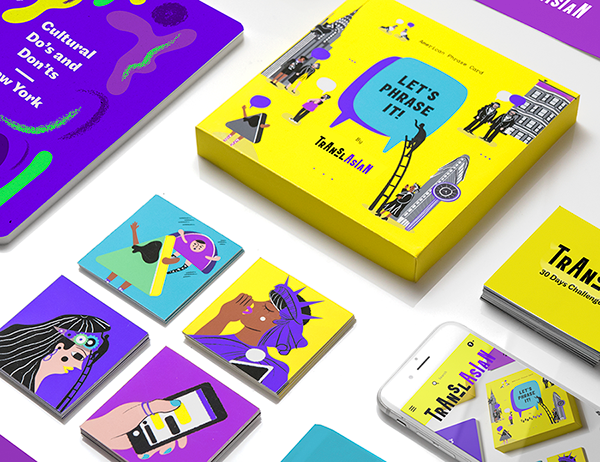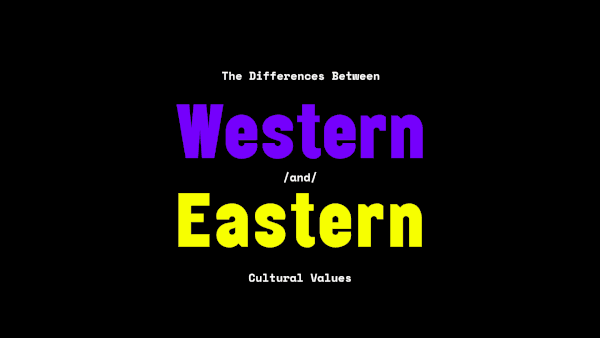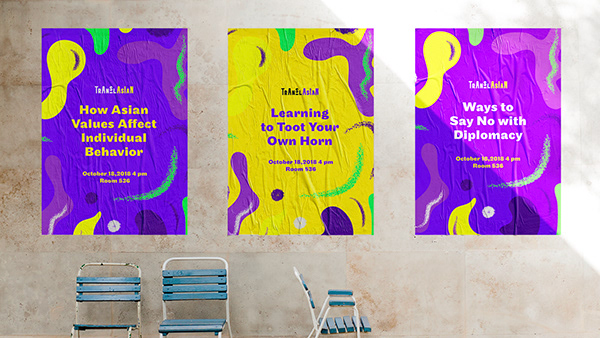The Gallery
Category
Region
Country
School
Status
Order by Behance appreciations
Order by Submitted date
 Filter by Portfolio
All entries
Filter by Portfolio
All entries
 Filter by XD
All entries
Filter by XD
All entries
Entries found
Loading entries
Translasian - A series of products and workshops that assists international students from East Asia to adapt to New York with confidence and comfort.
Krongporn Thongongarj
School of Visual Arts, United States
Social Impact - Photography / Print / Illustration / Graphic
Category Semifinalist

Translasian is self-help series of products and workshops that assist international students from East Asia to adapt to New York with confidence and comfort. We aim to bridge the cultural gap and to enable East Asian international students to embrace themselves and navigate fluidly in a variety of cross-cultural contexts.
In 2016, more than one million foreign students ventured America to pursue their higher education. (Xia, 2016) New York State has the second highest number of international students. Among the top 10 countries sending college students to the U.S., China is number one. Forty-four percent of all international students in the U.S. are from East Asian countries: China, South Korea, Vietnam, Taiwan and Japan. (Academic Level and Place of Origin, 2014/15-2015/16.”, n.d.)
Recent studies show that students from East Asian countries have fewer friends than their European counterparts. In addition, research shows that international students in the northeastern states are less happy with their bonds with American students than international students in the southern states. Large cities like Boston and New York are known for being tough for making genuine connections with local people if you are from somewhere else. (McMahon, 2012)
The obvious roadblock people think of is the language one. However, cultural barriers are also significant struggles that students experience throughout their transition period. One example is a gap in perspectives on friendship between Eastern and Western countries. In Asia, it is very common for companies to be together almost always both in school and extracurricular activities. However, it is common in the U.S. for comrades to enjoy each other’s company but not do everything together; not sharing the same interests and activities. Thus, for Asian students, there isn’t as much of the intensity of togetherness in their interactions with Americans as they are used to. (For Chinese Students in America, It’s Hard to Make Friends, n.d.)
There is an abundance of programs for international students, media, and platforms to fill the gaps in the language arena, both pre-studying in their home countries and opportunities for refinement after they are already on board. However, there are only a few tools like school orientations and workshops to facilitate their scaling of the cultural mountain ranges that lie before them, and they only touch the surface of the problem. There is no specific tool to help students from East Asian countries educate themselves to understand and adapt to very different social values. They need extra insight to succeed in their transition to American culture.(Michelini, n.d.)

Why “ Translasian”?
“Translasian” is derived from combining the words translasian and Asian. it is a medium create specifically for Asian to assimilate in New York.


Translasian is an illustration-heavy medium based on the goal of educating East Asian international students about American cultural differences and how to navigate through them. The content should be easy to understand, genuine and funny. The point is to enlighten the audience regarding what communication style they should pursue with Americans to foster clear accurate communication.The illustration style is spare and whimsical in order for the audience who may have language limitations to read through quickly.
A “Let’s Phrase It” matching cards game, New York version, is to enable newcomers to understand what people truely mean when they say it. The cards set divided into 4 categories: What People Really Mean, New York Slang, Millenial Slang, and idioms.


The mobile site consisting of five main components:
1. Cultural “do’s and don’ts”. This is the key for intercultural confidence. The content is divided into personal, social, academic and work sections for audiences to understand what is acceptable and unacceptable social protocol.
2. Feature Stories to share experience of people who has been through the same path.
3. Emergency Quick Fixes is for our customer to find instant helps
4. Self-Evaluation is for our audience to understand themselves and be able to develop their own strategy to break their bamboo ceiling
5. Challenges is to motivate East Asian students to challenge themselves to step out of their comfort zone to be better able to adapt in New York.




